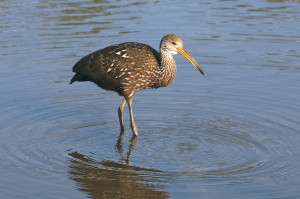 At certain times of the year, the Everglades can look like a scene out of Alfred Hitchock’s The Birds. Thousands of birds flock down to this warm climate to spend the winter and breed. For this article, we wanted to spotlight one species of bird that can be found in the Everglades: the Limpkin. This bird can actually be found in the Everglades year-round.
At certain times of the year, the Everglades can look like a scene out of Alfred Hitchock’s The Birds. Thousands of birds flock down to this warm climate to spend the winter and breed. For this article, we wanted to spotlight one species of bird that can be found in the Everglades: the Limpkin. This bird can actually be found in the Everglades year-round.
Limpkins are notoriously known to be noisy. In fact, you may have a better chance of hearing a limpkin than seeing one. Limpkins begin to make sounds at dusk and continue all through the night until dawn. Their cries aren’t sweet, usually they are loud screams, which are unmistakable.
This bird is related to rails and cranes. It’s a brown bird with white spots and streaks along its body. They have long necks, legs, and bills. Their long bills help them easily remove apple snails from their shells; apple snails are the main food source of the limpkin. Their bills, when closed, have a gap at the end that acts like tweezers. You can usually find the limpkin around areas where apple snails are abundant, but if apple snails are not easily found, the limpkin will eat other types of snails, freshwater mussels, insects, frogs, crustaceans, lizards, and worms.
You can find limpkins mainly around shallow bodies of water; they are a slow-moving bird with a high-stepping gait. The “limp” in limpkin comes from this gait that often gives off the appearance that the bird is limping even though it is not.
Limpkins stick with their own kind and do not mix in with other wading birds.
While nesting in the Everglades or other parts of Florida, they build their nests on top of floating vegetation, as well as high tree limbs. They can lay 3 to 8 eggs at a time. Florida is actually as far north as this bird goes. Limpkins can be found throughout the Caribbean, Central America, and South America.
Limpkins range from 25-28 inches in height with a wingspan of 39 to 42 inches in width.
Limpkins are not endangered or under watch, but at one point, their numbers were dwindling in Florida due to human development.
Want to have the chance to see (but most likely hear) this bird up close? Come out on an airboat tour to glide around the limpkin’s habitat. Captain Mitch’s Airboat Tours are a great way to explore all the ins and outs of this wetland. To book an airboat tour, click here or call 800-368-0065.
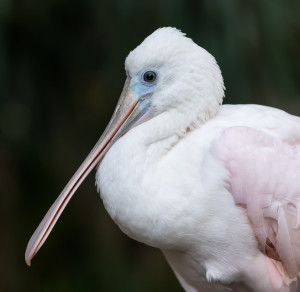 During the winter season, Florida can look like a scene out of Jurassic Park. The sheer scale and variety of birds flocking down here is a sight to be seen. Hundreds of birds of varying species stand side by side bodies of water and make the area their home for the winter/nesting season. One bird that can be spotted in southern Florida is the roseate spoonbill, and it happens to be a threatened species.
During the winter season, Florida can look like a scene out of Jurassic Park. The sheer scale and variety of birds flocking down here is a sight to be seen. Hundreds of birds of varying species stand side by side bodies of water and make the area their home for the winter/nesting season. One bird that can be spotted in southern Florida is the roseate spoonbill, and it happens to be a threatened species.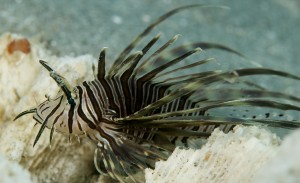 The Florida Everglades have long been a popular tourist destination for visitors from around the United States and around the world. It is easy to see why so many people make this a must see place on their “bucket lists” since it is a unique, one of a kind landscape that gives you access to an incredibly diverse and sensitive environment. The Everglades is a wilderness preserve like no other, allowing visitors a chance to experience flora and fauna that can’t be seen many (if any) other place on earth.
The Florida Everglades have long been a popular tourist destination for visitors from around the United States and around the world. It is easy to see why so many people make this a must see place on their “bucket lists” since it is a unique, one of a kind landscape that gives you access to an incredibly diverse and sensitive environment. The Everglades is a wilderness preserve like no other, allowing visitors a chance to experience flora and fauna that can’t be seen many (if any) other place on earth.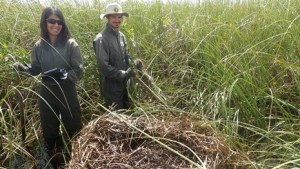 The Everglades National Park may be full of plants, animals, birds, insects, fish, and water, but it’s also home to many different research programs. The South Florida Natural Resources Center (SFNRC) conducts research that informs the management of the south Florida parks pertaining to wildlife, restoration, water quality, hydrology, and invasive plants and animals.
The Everglades National Park may be full of plants, animals, birds, insects, fish, and water, but it’s also home to many different research programs. The South Florida Natural Resources Center (SFNRC) conducts research that informs the management of the south Florida parks pertaining to wildlife, restoration, water quality, hydrology, and invasive plants and animals.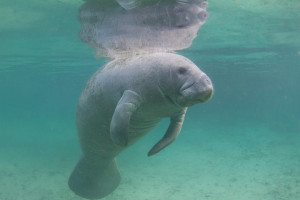 The Everglades is an amazing and pristine ecosystem that is a unique biome that is home to a huge wealth of different flora and fauna. For nature lovers, outdoor enthusiasts, and adventure seekers alike, the Everglades is a one-of-a-kind place that is unmatched. A lot of people, when planning a vacation to the Everglades, choose to experience Everglades National Park, which is a protected area of the Everglades where plants, animals, birds, and fish are protected and conserved.
The Everglades is an amazing and pristine ecosystem that is a unique biome that is home to a huge wealth of different flora and fauna. For nature lovers, outdoor enthusiasts, and adventure seekers alike, the Everglades is a one-of-a-kind place that is unmatched. A lot of people, when planning a vacation to the Everglades, choose to experience Everglades National Park, which is a protected area of the Everglades where plants, animals, birds, and fish are protected and conserved. Each year, Earth day is celebrated on April 22. Back in 1970, 20 million people participated in the first Earth Day celebration. Fast forward 47 years, and we now have the Clean Air, Clean Water, and Endangered Species Acts. Florida is home to the Everglades, many species of animals, fish and birds, and thousands of plant life, so Earth Day and these environmental laws have special meaning to this state.
Each year, Earth day is celebrated on April 22. Back in 1970, 20 million people participated in the first Earth Day celebration. Fast forward 47 years, and we now have the Clean Air, Clean Water, and Endangered Species Acts. Florida is home to the Everglades, many species of animals, fish and birds, and thousands of plant life, so Earth Day and these environmental laws have special meaning to this state.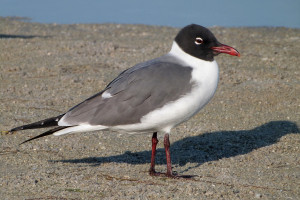 Do you know what the most common gull in the Everglades is? The laughing gull! These gulls are medium in size with long wings and legs. They are a coastal warm-weather species, which is why they can be found hanging around the Everglades year round. Below, we wanted to share some fun facts about this bird.
Do you know what the most common gull in the Everglades is? The laughing gull! These gulls are medium in size with long wings and legs. They are a coastal warm-weather species, which is why they can be found hanging around the Everglades year round. Below, we wanted to share some fun facts about this bird.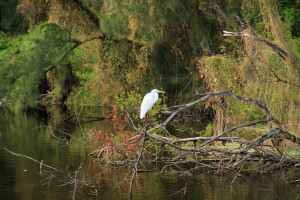 It’s officially the dry season in the Everglades and Florida, which is the best time to head down to the area to view an array of different wildlife species. During this time of year, the good weather combined with low water levels creates the perfect conditions and environment for animals and birds to congregate near bodies of water.
It’s officially the dry season in the Everglades and Florida, which is the best time to head down to the area to view an array of different wildlife species. During this time of year, the good weather combined with low water levels creates the perfect conditions and environment for animals and birds to congregate near bodies of water.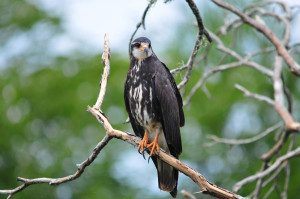 Avid birdwatcher? Well, the Everglades is a great place to go bird watching; you’ll see a variety of birds. The Park provides the perfect setting with plenty of spots where birds roost, nest, eat, or fly by. In fact, the Park is one of the top 10 birding locations in the world; park goers have the chance to see both resident coastal and wading birds in a number of different species. There are more than 350 species of birds in the Everglades for a person to catch a glimpse of! Come prepared with a set of binoculars to spot as many as you can!
Avid birdwatcher? Well, the Everglades is a great place to go bird watching; you’ll see a variety of birds. The Park provides the perfect setting with plenty of spots where birds roost, nest, eat, or fly by. In fact, the Park is one of the top 10 birding locations in the world; park goers have the chance to see both resident coastal and wading birds in a number of different species. There are more than 350 species of birds in the Everglades for a person to catch a glimpse of! Come prepared with a set of binoculars to spot as many as you can!





